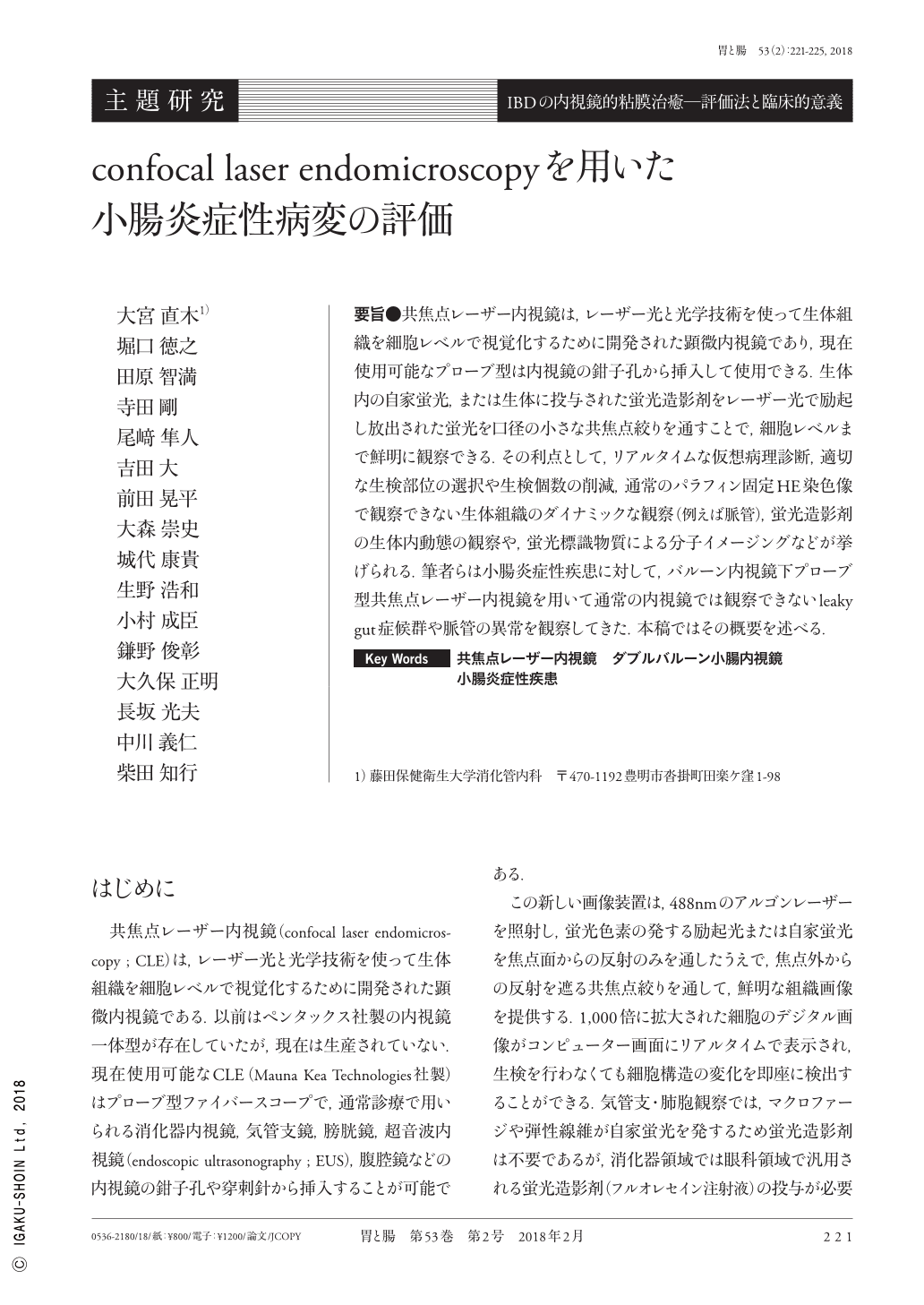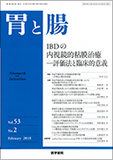Japanese
English
- 有料閲覧
- Abstract 文献概要
- 1ページ目 Look Inside
- 参考文献 Reference
要旨●共焦点レーザー内視鏡は,レーザー光と光学技術を使って生体組織を細胞レベルで視覚化するために開発された顕微内視鏡であり,現在使用可能なプローブ型は内視鏡の鉗子孔から挿入して使用できる.生体内の自家蛍光,または生体に投与された蛍光造影剤をレーザー光で励起し放出された蛍光を口径の小さな共焦点絞りを通すことで,細胞レベルまで鮮明に観察できる.その利点として,リアルタイムな仮想病理診断,適切な生検部位の選択や生検個数の削減,通常のパラフィン固定HE染色像で観察できない生体組織のダイナミックな観察(例えば脈管),蛍光造影剤の生体内動態の観察や,蛍光標識物質による分子イメージングなどが挙げられる.筆者らは小腸炎症性疾患に対して,バルーン内視鏡下プローブ型共焦点レーザー内視鏡を用いて通常の内視鏡では観察できないleaky gut症候群や脈管の異常を観察してきた.本稿ではその概要を述べる.
CLE(confocal laser endomicroscopy)is a novel endoscopic imaging technique that provides in vivo histology during ongoing endoscopy. The probe-based system developed by Mauna Kea Technologies can be inserted through the working channel of any endoscope to visualize the tissue at a microscopic level. As GastroFlex UHD and Coloflex UHD probes are 3 and 4m long, respectively, these can be used during balloon-assisted enteroscopy. The ability of CLE to provide a high-resolution assessment at the cellular level might provide more real images than conventional pathology. Here, we outline probe-based CLE and illustrate our experiences of pCLE via double-balloon enteroscopy for small bowel diseases.

Copyright © 2018, Igaku-Shoin Ltd. All rights reserved.


